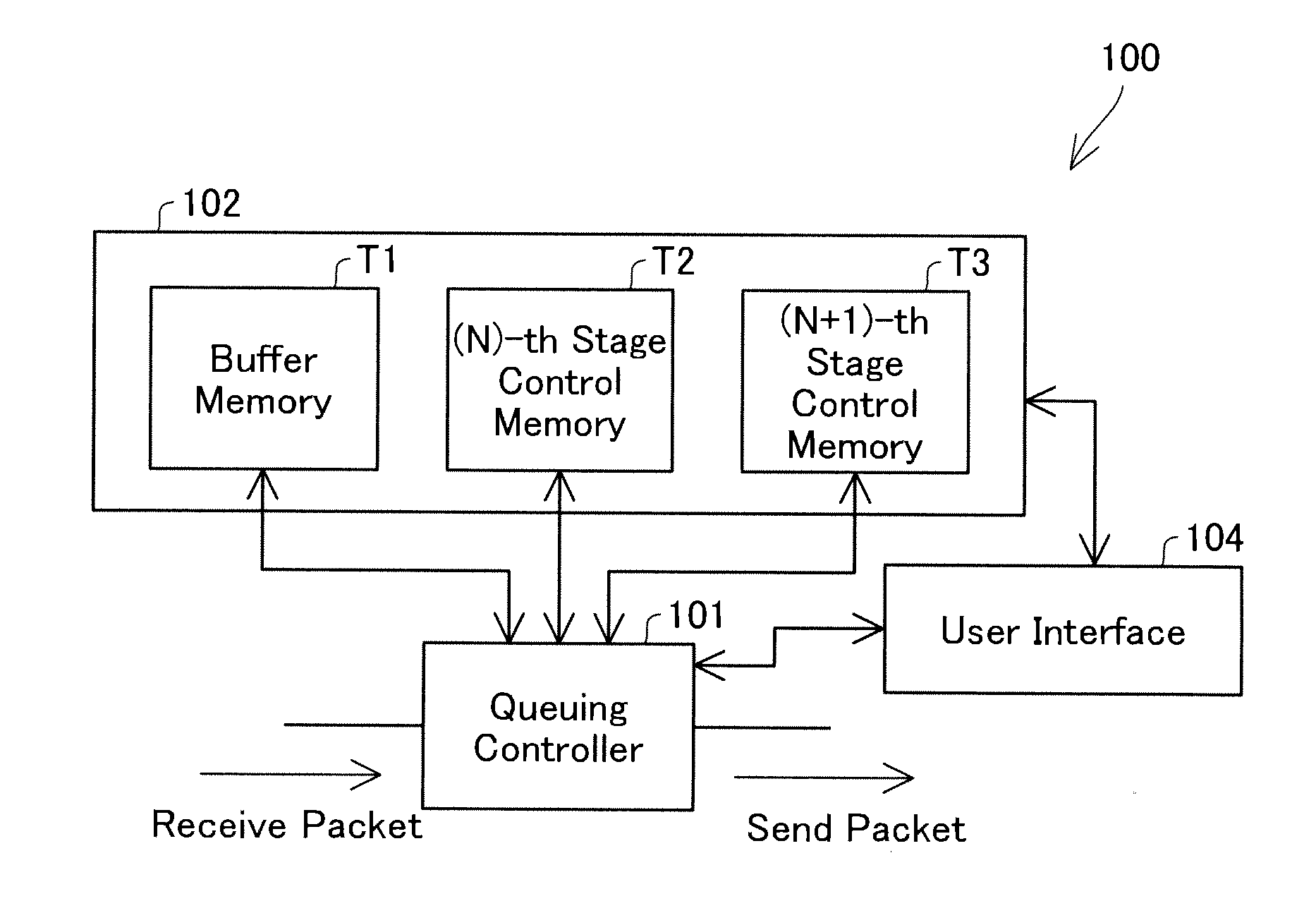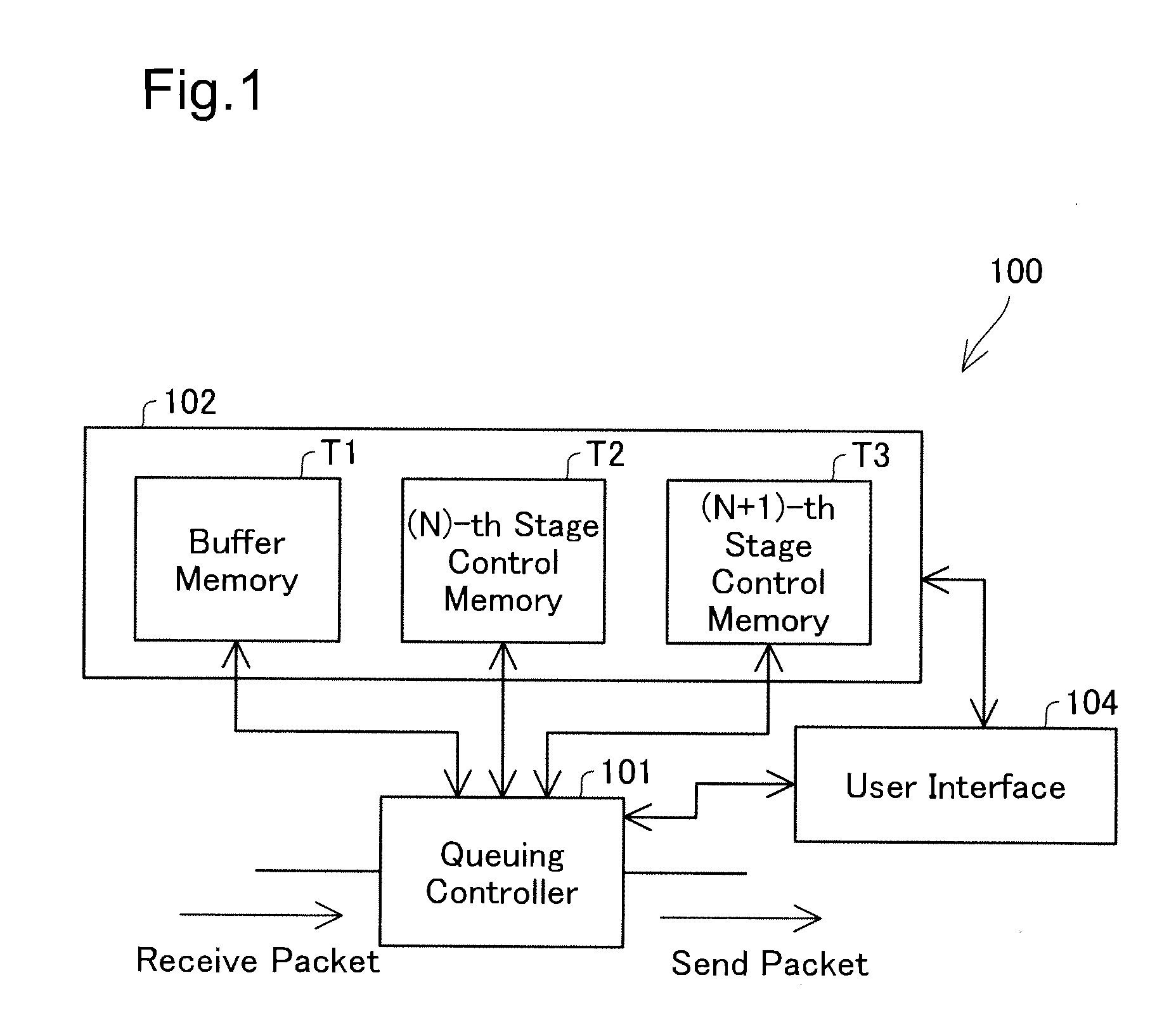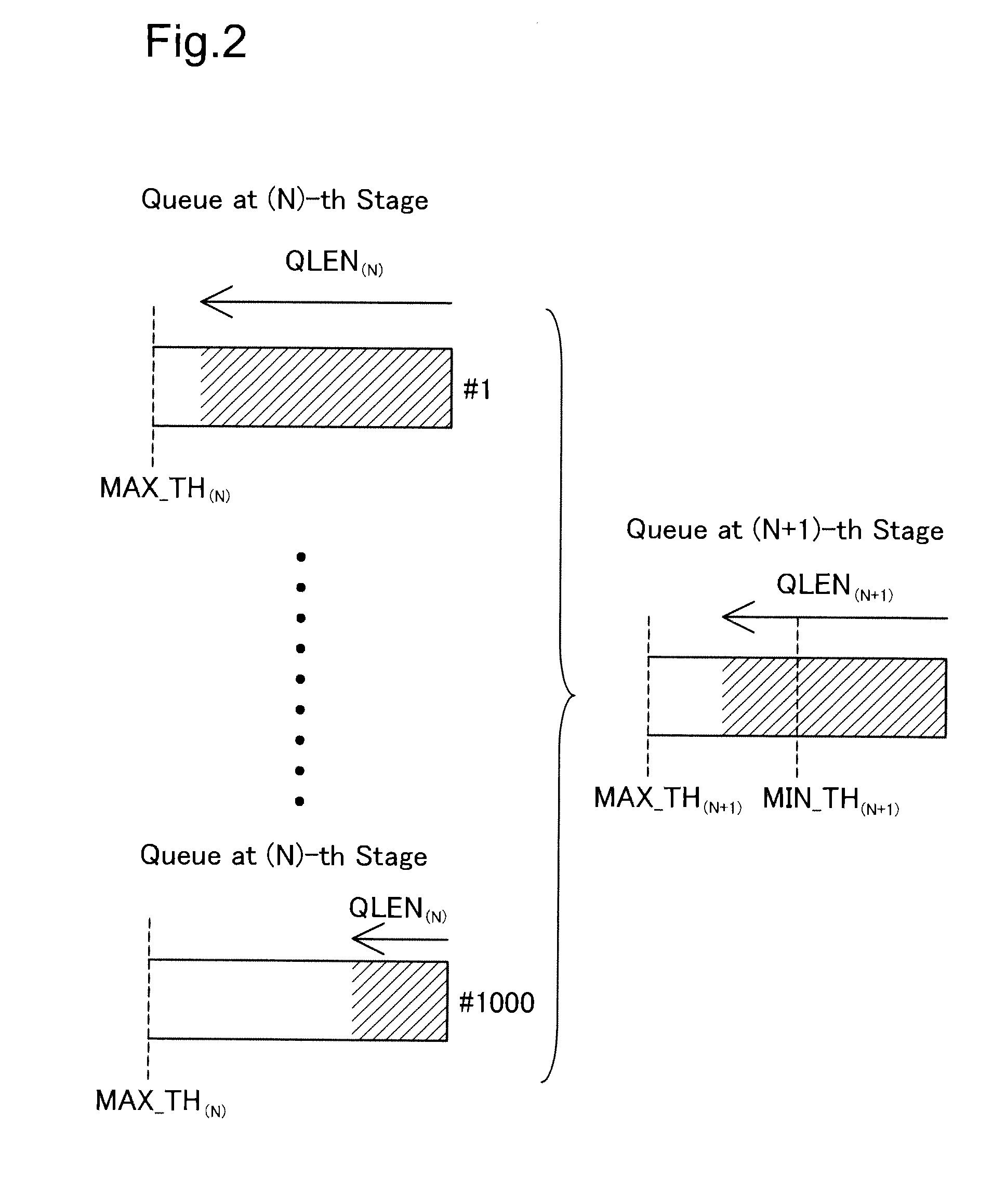Packet relay apparatus and method of relaying packet
a relay apparatus and packet technology, applied in electrical apparatus, digital transmission, data switching networks, etc., can solve problems such as congestion of communication, overflow of communication relay apparatus, interference with smooth communication,
- Summary
- Abstract
- Description
- Claims
- Application Information
AI Technical Summary
Benefits of technology
Problems solved by technology
Method used
Image
Examples
first embodiment
A. First Embodiment
A1. Apparatus Configuration
[0047]FIG. 1 is an explanatory diagrammatic representation of the configuration of a packet relay apparatus 100 with focusing on its queuing-relevant portion according to one embodiment of the present invention. The packet relay apparatus 100 internally has queues at two different stages for packet communication. In the following description of this embodiment, a former stage and a latter stage in the packet relay apparatus 100 are expressed as an (N)-th stage and an (N+1)-th stage.
[0048]The packet relay apparatus 100 includes a queuing controller 101 configured to perform queuing control of packets based on control information of the respective queues, a memory group 102 configured to store control information and packets, and a user interface 104. The queuing controller 101 includes a CPU, a ROM, and a RAM (all not shown). The CPU reads and executes a program loaded on the RAM to perform the queuing control. The memory group 102 includ...
second embodiment
B. Second Embodiment
[0083]FIG. 9 is a conceptual diagrammatic representation of a multi-stage queue structure in a second embodiment. The difference from the multi-stage queue structure of the first embodiment described above is only drop classes adopted for the (N+1)-th stage queue drop / non-drop determination. The apparatus configuration and the processing flow of the (N)-th stage queue drop / non-drop determination are identical with those of the first embodiment. The drop classes are used to classify packets by the priority and are set to have different priorities.
[0084]In this embodiment, the queuing controller 101 classifies each packet into one of four drop classes, based on the state of an identified queue at the (N)-th stage which the packet belongs to. The queuing controller 101 then makes packets classified into a drop class with the higher priority unlikely to be dropped, compared with packets classified into a drop class with the lower priority. More specifically, the queu...
third embodiment
C. Third Embodiment
[0091]FIG. 11 is an explanatory diagrammatic representation of the control information stored in the (N)-th stage control memory T2 in a third embodiment. In the first and the second embodiments discussed above, the queuing controller 101 uses the queue length QLEN(N) of an identified queue at the (N)-th stage for computation of the drop probability DP and specification of a drop class. Alternatively the queuing controller 101 may measure communication traffic TRAF(N) of an identified queue at the (N)-th stage and use the measured communication traffic TRAF(N) as the control information for the (N+1)-th stage queue drop / non-drop determination. More specifically, the queuing controller 101 may compute the drop probability DP or specify the drop class in order to increase the preference of decision of a drop for a packet belonging to a queue with heavy communication traffic TRAF by the (N+1)-th stage queue drop / non-drop determination. This scheme also enables the (N...
PUM
 Login to View More
Login to View More Abstract
Description
Claims
Application Information
 Login to View More
Login to View More - R&D
- Intellectual Property
- Life Sciences
- Materials
- Tech Scout
- Unparalleled Data Quality
- Higher Quality Content
- 60% Fewer Hallucinations
Browse by: Latest US Patents, China's latest patents, Technical Efficacy Thesaurus, Application Domain, Technology Topic, Popular Technical Reports.
© 2025 PatSnap. All rights reserved.Legal|Privacy policy|Modern Slavery Act Transparency Statement|Sitemap|About US| Contact US: help@patsnap.com



